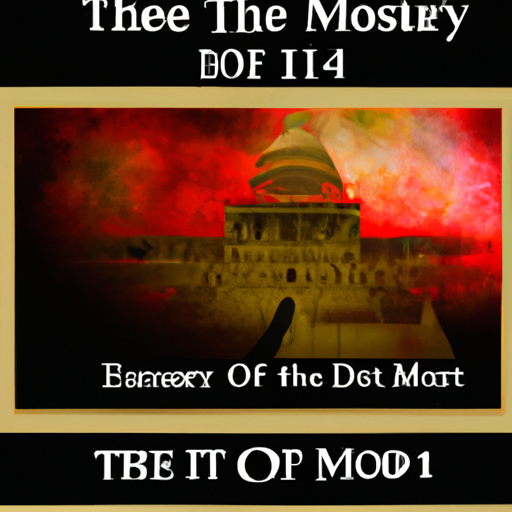A Look into the History of China’s First People
Uncovering the secrets of China’s original inhabitants has been a source of intrigue for centuries. Although the identities of these ancient people remain largely unknown, research, archaeological evidence, and artifacts have allowed us to begin piecing together a portrait of who they were and how they lived.
It is believed that the ancestors of modern-day Chinese people arrived in China around 40,000 years ago, roaming the land as hunter-gatherers. Over time, their societies evolved into more complex cultures with their own customs and beliefs that are still present today.
Further exploration into this past reveals fascinating details about the tools they used for hunting and gathering, their spiritual practices and rituals, as well as their unique art forms such as pottery making and jade carving. By delving deeper into this history, we can gain an appreciation for how these people lived and what made them so successful as a society.
Introduction
Mystifyingly, the Homo erectus were the earliest known inhabitants of China, living in the area as far back as 1.66 million years ago. Then, there was a stretch of Neolithic cultures such as the Yangshao and Longshan that spanned from around 7000-2000 BC. By the Shang dynasty (1600-1046 BC), Chinese civilization had already taken root and was blossoming. The Zhou dynasty (1046-256 BC) marked an era of remarkable intellectual and cultural progress, with Confucianism starting to become a fundamental philosophical tradition in China. The Han dynasty (206 BC – 220 AD) is typically seen as a golden age for Chinese culture, with many significant advances made in art, literature, science, and technology. During this time frame, numerous ethnic groups migrated to China from other parts of Asia, adding to the diversity of Chinese culture today.
– History of the Ancient Chinese People
Throughout the ages, Chinese civilization has been marked by a long and complex history. Archaeological evidence suggests that the earliest societies first appeared around 5000 BC in the Yellow River Valley, where they developed sophisticated tools and technologies such as pottery-making and bronze metallurgy.
The Xia Dynasty (c. 2100–1600 BC) was the first recorded dynasty in Chinese history, founded by Yu the Great who is credited with controlling floods and establishing a unified government. This was followed by the Shang Dynasty (1600–1046 BC), which is renowned for its advances in writing, astronomy, and warfare. Large palaces were constructed for religious ceremonies during this period, while bronze weapons were used extensively in battles.
The Zhou Dynasty (1045–256 BC) is considered to be one of China’s most significant dynasties. This era saw many technological advances such as iron smelting and irrigation systems that allowed for larger scale agriculture production. It also saw a shift from tribalism to feudalism with an increased emphasis on Confucian philosophy and meritocracy within society.
The Qin Dynasty (221–206 BC) marked a turning point in Chinese history as it was during this period that China was unified under one ruler for the first time ever—Emperor Qin Shi Huangdi—who standardized weights, measures, currency, writing systems, laws, and even built a massive network of roads across China.
The Han Dynasty (206 BC – 220 AD) saw an expansion of trade along the Silk Road connecting East Asia with Europe as well as increased contact with Central Asian cultures leading to cultural exchange between China and other parts of Asia. Confucianism also became increasingly influential in government affairs which would become an important part of Chinese culture moving forward into modern times.
For two thousand years imperial rule reigned until 1912 when Republic of China was established on mainland China followed by People’s Republic of China in 1949 after Communist Party victory over Nationalist forces led by Chiang Kai-shek in civil war thus bringing an end to imperial system ushering new era under Communist rule which continues till today making it longest lasting government system surpassing Roman Empire.
– Understanding the Origins of Chinese Civilization
A miasma of influences, from religious to geographic to political, have coalesced to form the complex and ancient Chinese civilization. To comprehend its beginnings, it is necessary to trace its progress through time.
The earliest records of Chinese culture appear in 1600 BCE when the Shang Dynasty reigned over much of northern China. During this era a writing system was created for communication between people in different areas of the country and advances were made in technology such as bronze smelting and pottery-making.
The Zhou Dynasty (1046-256 BCE) saw the emergence of Confucianism as a powerful philosophy that would later become influential throughout East Asia. This period also brought forth various schools of thought such as Daoism and Legalism which had an immense effect on Chinese culture. Simultaneously, China’s borders extended significantly through military conquest and diplomatic alliances with other nations.
The Qin Dynasty (221-206 BCE) represented a crucial moment in Chinese history by unifying much of the region under one government for the first time. The Qin rulers imposed strict legislation and standardized many facets of life including weights, measures, currency, writing system, language, architecture, and clothing styles all over their domain. This period also witnessed major engineering accomplishments like the Great Wall of China being constructed to ward off threats from nomadic tribes living in northern regions.
The Han Dynasty (206 BCE – 220 CE) was another important epoch which saw an expansion in trade with other countries along the Silk Road trade routes as well as advances in science and technology like papermaking and gunpowder production. During this period Confucianism became firmly entrenched as an official state ideology which would remain influential for centuries afterward.
Throughout its long history, Chinese civilization has been molded by numerous factors including geography, politics, economics, religion and philosophy; comprehension of these influences can assist us in understanding how Chinese civilization has developed over time into what we now witness today.
– Exploring the Ancient Chinese Dynasties
Venturing into the mysterious past of China is an exciting voyage through its long-standing history. For nearly four millennia, the country has been home to a plethora of extraordinary tales and occurrences that have molded its culture and people. From the Xia Dynasty to the Qing Dynasty, each era left behind its own mark on Chinese civilization. Generally, these dynasties are split into two eras: pre-imperial and imperial. During pre-imperial times, many separate states were established in what is now modern-day China, often resulting in conflict as they competed for resources and power. In 221 BC, Qin Shi Huang unified these states and created a centralized government known as the Qin Dynasty; thus beginning imperial rule in China and bringing about a period of political stability and economic prosperity.
The following dynasties maintained this level of stability until 1911 when a revolution overthrew the last imperial dynasty, the Qing Dynasty. This era saw great advancements in science, technology, literature, art, philosophy, religion, architecture and more – many of which still influence Chinese culture today; Confucianism being one example that continues to be seen as an integral part of Chinese society today.
Studying ancient Chinese dynasties allows us to comprehend how different cultures interacted with each other over time to produce something unique and lasting. It also helps us understand why certain aspects of Chinese culture remain so influential today; offering us greater insight into our own history while showing respect for other cultures around us.
– Examining the Impact of Early Chinese History on Modern China
Exploring the reverberations of ancient Chinese history on today’s China is a critical subject to consider. The chronicle of China is an intricate and long one, extending back thousands of years. Its early past has had a significant result on the nation’s culture and politics in the present day. In this article, we will investigate how early Chinese history has formed contemporary China and what we can gain from it.
The earliest known period of Chinese civilization began in the Yellow River Valley circa 2000 BCE. During this time, the original cities were established and the foundations for numerous elements of Chinese culture were laid out. This included writing systems, legal codes, religious beliefs, and art forms that have been transmitted through generations to shape modern-day China.
In 221 BCE, Qin Shi Huang unified much of what is now current-day China under one rule for the first time in its history. This period marked an essential transition from feudalism to centralized government control over extensive areas of land. This form of government was maintained until 1911 when a revolution led by Sun Yat-sen brought about a new republic.
The sway of Confucianism on Chinese society cannot be overlooked either when considering its influence on modern China. Confucianism is an ideology based on moral principles such as filial piety, respect for elders and social harmony that was formulated during the Warring States Period (475–221 BCE). These values are still very much alive in Chinese society at present and have played a vital role in forming its culture and politics.
Lastly, it is important to note that many aspects of traditional Chinese medicine also originate from ancient times. Traditional medicine has been practiced in China for thousands of years with roots going back to Neolithic times (10 000–2000 BCE). Today, traditional medicine remains popular among many people in China who use it alongside more advanced medical treatments and therapies to maintain their health and wellbeing.
In conclusion, early Chinese history has had a deep effect on modern-day China both culturally and politically. Through examining its past we can achieve insight into why certain aspects of Chinese society have developed as they have today while also learning valuable lessons about how best to move forward into the future.
– Analyzing the Historical Significance of China’s First People
Exploring the past of China’s initial inhabitants is an essential component in comprehending the nation’s background. Examining the historic importance of this populace can give a more profound comprehension of how their culture and convictions have molded present day Chinese culture.
To analyze the historical importance of China’s first people, it is imperative to comprehend who they were. It is accepted that the primary tenants of China were nomadic seeker gatherers who moved from Central Asia around 8,000 BCE. They lived in little gatherings and voyaged looking for food and assets. After some time, these early occupants created refined instruments and weapons, just as a framework for exchanging merchandise with different gatherings.
The historical significance of these early inhabitants can be seen in their effect on the improvement of Chinese culture and society. For instance, they are credited with presenting horticulture to the district, which permitted for perpetual settlements and eventually prompted the improvement of urban communities and states. Furthermore, they created numerous strict convictions that still impact Chinese culture today, for example, progenitor love and confidence in different divine beings and goddesses.
The historical significance of China’s first people can likewise be seen in their commitments to writing, craftsmanship, music, reasoning, drug, science, innovation, designing and arithmetic. In particular, their composition framework was adjusted by later realms for authority records and archives all through Chinese history.
At long last, examining the historical importance of China’s first people can give understanding into how their culture has been passed down through ages to shape present day Chinese society today. By taking a gander at their conventions and convictions we can pick up a superior comprehension of how these qualities have been safeguarded after some time despite changes in government or social structure. All things considered, inspecting the historical importance of China’s first people gives an important setting for understanding how their heritage has influenced present day Chinese culture and society today.
conclusion

Astonishingly, it appears that the origin of China dates back to an incredible 10,000 years ago! Rumors tell of hunter-gatherers inhabiting the Yellow River Valley in its earliest days. As time passed, these inhabitants developed agriculture and domesticated animals, paving the way for the formation of small villages and eventually larger civilizations. It’s a remarkable story that has been woven into Chinese culture over centuries!
.
Some questions with answers
Q1: Who were China’s first people?
A1: The first people of China were the ancestors of the Han Chinese, who are believed to have settled in present-day China around 10,000 BC.
Q2: What is the history of these early settlers?
A2: These early settlers developed a unique culture and language that laid the foundations for what would later become the Chinese civilization. They created tools and weapons from stone and bone, practiced agriculture, and built large cities.
Q3: Where did they live?
A3: The ancestors of the Han Chinese lived primarily in what is now known as Northern China. They spread throughout the region over time, eventually settling in other parts of modern-day China such as Tibet and Inner Mongolia.
Q4: How did their culture evolve?
A4: Over time, these early settlers developed a complex system of writing and philosophy. They also developed advanced technologies such as gunpowder and papermaking. These innovations helped shape the course of Chinese history.
Q5: What legacy do they leave behind?
A5: The legacy of these early settlers can still be seen today in modern-day Chinese culture. Their language, writing system, philosophy, technology, and art all remain an important part of contemporary Chinese society.






